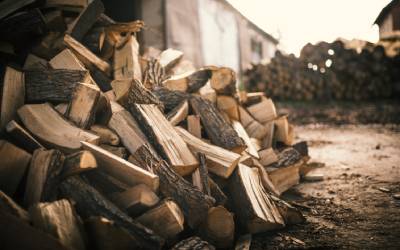 Although we all like to curl up next to a warm fire during the wintertime, the luxury of keeping firewood to do so often comes with unwanted pest problems. If you aren’t careful about the way that you store your firewood, all sorts of insects and even rodents can take advantage of a temporary shelter, and even move inside your home to get warmer. Over our decades of service in Northern Utah & Southern Idaho, we’ve learned the best ways to protect your woodpile and keep pests out of your home. Read on for advice from our expert technicians at Rentokil.
Although we all like to curl up next to a warm fire during the wintertime, the luxury of keeping firewood to do so often comes with unwanted pest problems. If you aren’t careful about the way that you store your firewood, all sorts of insects and even rodents can take advantage of a temporary shelter, and even move inside your home to get warmer. Over our decades of service in Northern Utah & Southern Idaho, we’ve learned the best ways to protect your woodpile and keep pests out of your home. Read on for advice from our expert technicians at Rentokil.
What Types of Pests Do Woodpiles Attract?
A good number of pests that you might find around your woodpile in the winter will do no harm to your family or your home. Boxelder bugs, moths, earwigs, some species of spiders, and other pests might be a nuisance, but cannot cause damage to your property or spread diseases. However, there are a few pests that you should watch out for around your woodpile:
No one likes the sound of having bees or wasps around their property, but with carpenter bees, the potential for property damage is present, too. Additionally, termites, powderpost beetles, and carpenter ants all bore through our homes’ wooden structures, whether to eat the cellulose within in the wood or to make nests. Termites are one of the worst pests you can have in your home—in the United States alone, subterranean termites cause an estimated $5 billion in property damage every year!
How to Keep Pests Out of Your Piled Firewood
If you leave your woodpile in a vulnerable state for too long, you will certainly develop a pest infestation of some sort. Here are Rentokil’s three best pieces of advice to stop this from happening:
- Keep your firewood elevated and covered: Woodpiles left on the ground can attract carpenter ants and termites that live in the soil beneath. Keeping your woodpile stored in a rack off the ground will reduce your chances of an infestation developing.
- Keep it at a distance: Your woodpile should not be left resting against the side of your home. The further away you store it, the less likely your home will become infested.
- Burn older wood first: When you take wood inside to start a fire, make sure you pick the older logs to burn first. Older logs are more likely to be infested, but if you get them into your home and burn them quickly, the pests shouldn’t spread around your home.
Winter Pest Control in Northern Utah & Southern Idaho
If you want to feel certain that your woodpile isn’t the reason for any pest infestations this winter, reach out to your local pest control company. Our technicians at Rentokil can perform a complete property inspection to find any vulnerabilities or potential causes of a pest outbreak. We can also help you take preventative measures to keep pests out of your home in every season.Don’t wait until it’s too late to stop pests this winter—reach out today for a free quote!

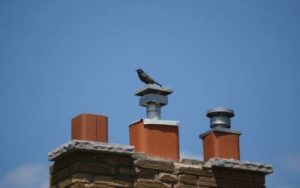 Having a bunch of birds around your home might not seem like a problem, and it may even be invited, but birds can actually cause lots of problems for homeowners in Northern Utah & Southern Idaho. Besides the noise that they can come with, birds are capable of causing property damage in many forms, and they can even cause diseases with their droppings. If you have birds resting in or around your chimneys, it’s important to take action to remove them quickly. Read on to learn how Rentokil advises you to do so!
Having a bunch of birds around your home might not seem like a problem, and it may even be invited, but birds can actually cause lots of problems for homeowners in Northern Utah & Southern Idaho. Besides the noise that they can come with, birds are capable of causing property damage in many forms, and they can even cause diseases with their droppings. If you have birds resting in or around your chimneys, it’s important to take action to remove them quickly. Read on to learn how Rentokil advises you to do so!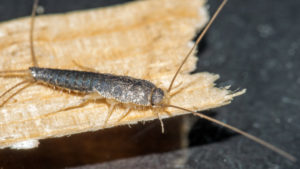 Silverfish—we’ve all seen these tiny bugs around our homes. They will feed on your books, dead skin cells, and other materials that are starchy. Silverfish are nocturnal so you may not see them during the day. You’ll most likely figure out you have them by the signs they leave behind. If you notice dark, damp areas that have excrement that resembles black pepper or find yellowish stains on paper, cereal boxes, wallpaper or clothing, and fabrics it’s a sign that silverfish are around.
Silverfish—we’ve all seen these tiny bugs around our homes. They will feed on your books, dead skin cells, and other materials that are starchy. Silverfish are nocturnal so you may not see them during the day. You’ll most likely figure out you have them by the signs they leave behind. If you notice dark, damp areas that have excrement that resembles black pepper or find yellowish stains on paper, cereal boxes, wallpaper or clothing, and fabrics it’s a sign that silverfish are around.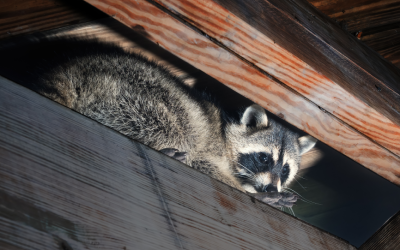 It’s the holiday season and the last thing you want to worry about is a pest infestation. And with summer far behind us at this point, many make the mistake of thinking pest infestations are in the past, too. Unfortunately, there are a number of common pest problems that occur in the winter here in Northern Utah & Southern Idaho. With our bitter cold temperatures, many pests and animals look to escape the dropping temperatures.
It’s the holiday season and the last thing you want to worry about is a pest infestation. And with summer far behind us at this point, many make the mistake of thinking pest infestations are in the past, too. Unfortunately, there are a number of common pest problems that occur in the winter here in Northern Utah & Southern Idaho. With our bitter cold temperatures, many pests and animals look to escape the dropping temperatures.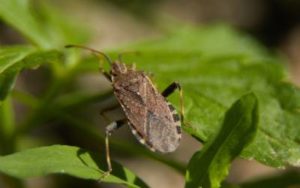 If you’ve been noticing a gradual increase in the amount of little, brown, shield-shaped bugs around your home in Northern Utah or Southern Idaho over the past few years, you are not alone. You might even recognize them to be stink bugs, but you might not know why this particular kind just can’t seem to stop multiplying. To learn more about these pests, read on for information compiled by the technicians at Rentokil!
If you’ve been noticing a gradual increase in the amount of little, brown, shield-shaped bugs around your home in Northern Utah or Southern Idaho over the past few years, you are not alone. You might even recognize them to be stink bugs, but you might not know why this particular kind just can’t seem to stop multiplying. To learn more about these pests, read on for information compiled by the technicians at Rentokil!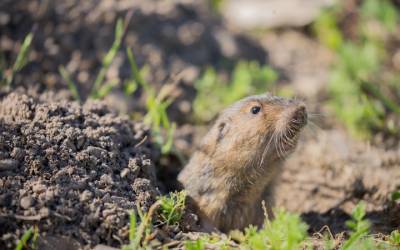 There are many signs of potential rodent activity that you might find in your yard: little dirt mounds starting to cluster on your lawn, holes popping up in the dirt in your yard, or unforeseen plant decay in your garden. All of these might mean that you’re currently hosting rodents, but how do you know which ones you’re dealing with? Moles, voles, and gophers are all common fall rodents in Northern Utah, and their burrowing can negate all of the hard work that you put in to
There are many signs of potential rodent activity that you might find in your yard: little dirt mounds starting to cluster on your lawn, holes popping up in the dirt in your yard, or unforeseen plant decay in your garden. All of these might mean that you’re currently hosting rodents, but how do you know which ones you’re dealing with? Moles, voles, and gophers are all common fall rodents in Northern Utah, and their burrowing can negate all of the hard work that you put in to 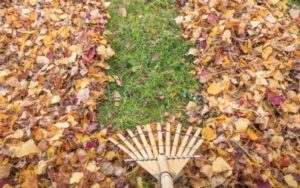 You might think that the waning temperatures and increasing rainfall of the fall allow you to take a break from your lawn care routines, but this is the opposite of the case. With a long winter on the horizon, your lawn has to absorb moisture and nutrients during the fall in order to hang on during the cold and stay healthy until spring. If you’re looking to keep your yard in Northern Utah looking its best all year, read on for advice from the experts at Rentokil. Our lawn care experts have laid out some top fall lawn care tips for you!
You might think that the waning temperatures and increasing rainfall of the fall allow you to take a break from your lawn care routines, but this is the opposite of the case. With a long winter on the horizon, your lawn has to absorb moisture and nutrients during the fall in order to hang on during the cold and stay healthy until spring. If you’re looking to keep your yard in Northern Utah looking its best all year, read on for advice from the experts at Rentokil. Our lawn care experts have laid out some top fall lawn care tips for you! If you find
If you find 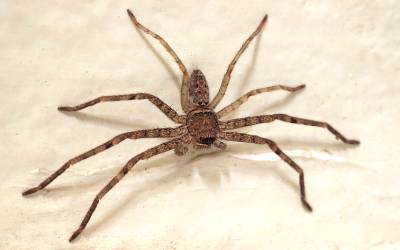 The little brown spiders you’ve been seeing around the
The little brown spiders you’ve been seeing around the 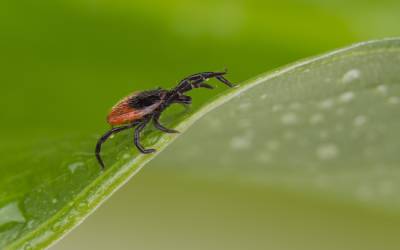 We all look forward to the warm days spent out in the sun during summer. However, the more time we spend outside, the higher our risk of a tick bite becomes. Ticks love areas with consistent warmth and humidity, especially when humans and animals are around. They live in the woods, around hiking trails, in backyards, and many more areas. Ticks have also expanded to more regions than usual recently due to
We all look forward to the warm days spent out in the sun during summer. However, the more time we spend outside, the higher our risk of a tick bite becomes. Ticks love areas with consistent warmth and humidity, especially when humans and animals are around. They live in the woods, around hiking trails, in backyards, and many more areas. Ticks have also expanded to more regions than usual recently due to